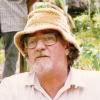The MORETON BAY COURIER of 14th February 1857 reported:
“The PARSEE has made a very good passage of 87 days, having left Southampton on the 14th November, and arrived at the anchorage in the Bay on Monday, the 9th instant. She brings 366 immigrants to our shores. There have been several cases of measles on board; and 26 deaths, mostly children, have taken place during the voyage, the last case occurring about a fortnight previous to her arrival. It has not been thought it necessary to place her in quarantine, and it is intended to bring up the passengers on Monday. The Captain complains of the delay which took place in the boarding of the vessel. He arrived in the Bay at one o'clock on Monday, and reported his arrival to the "Pearl" which was also at anchor. He waited until Wednesday for the proper authorities to board; and on that day, finding that no one came near, he proceeded himself in the ships' boat to Brisbane, and reported the arrival of the vessel. He was not allowed to land at Brisbane, and returned the same evening to the ship. It was not until Thursday that he was visited by the parties whose duty it is to be on the look-out for ships arriving in our Port. The case is one which requires investigation.”
This was not an auspicious start to a new life for George BRIGHTWELL, his wife Mildred Maria, and seven children, especially as they had departed Southampton with eight children. The youngest, Clara, about four years old, was one of the 26 passengers who perished on the voyage. The surviving accompanying children, listed with their parents on the passenger list, were George (13), Emma (11), John (10), Ellen Sophia (8), and Robert (6). Another son, Walter (14), was listed as an individual.
George BRIGHTWELL was born about 1812 or 1813 in Hatfield Peverel, Essex, the son of John BRIGHTWELL and Jane GREEN. He married Mildred Maria DACE (b.1815, Witham, Essex, daughter of James DACE and Mildred MALYON) in Chippinghill, Witham, Essex on 18th April 1837.
At the time of the 1841 Census he was living in East Hanningfield Road, Great Baddow, Essex, with his wife and two daughters, Eliza Jane and Mildred Maria. In the 1851 Census, he was still in Great Baddow and the family had expanded with the addition of Walter, George, Emma, John, Ellen Sophia and Robert. On both occasions, George gave his occupation as “carpenter”. Eliza Jane was still living at home in 1851 but young Mildred Maria, aged 11, was working as a general servant in the household of James FINCHAM, a baker in Baddow Lane, Chelmsford, Essex. Little Clara was born in 1853.
The two oldest children, Eliza Jane and Mildred Maria, preceded their parents and siblings to the Colonies, joining a migration scheme to Launceston, Tasmania, and arriving in 1855 on the “Whirlwind”. Eliza Jane would later join her family in Brisbane, but not before marrying and being widowed. She would bring with her not only her own child from that short-lived marriage, Alice Louisa WALKER, but also Mildred Maria’s eldest son, Frederick William BRIGHTWELL.
In 1858, Alice Louisa BRIGHTWELL was born. George and his family settled first in Fortitude Valley, where the 1864-65 electoral roll places George Sr and George Jr in Brunswick Street. In 1887, the rolls have George living in Fortescue Street. George was living at 20 Barker Street, New Farm, at the time of his death in 1900. Early residence in the Valley was probably a result of George’s involvement in bridge building, with the first vehicular bridge across Breakfast Creek possibly being one of his earliest projects. This bridge was commenced in 1858 and would ‘play cupid’ to Emma, as will be explained in due course.
When the writer was young, his grandmother would point out the wooden bridges between Brisbane and Cleveland that had been built by her grandfather. Undoubtedly, many other wooden bridges around Queensland were constructed under the direction of George BRIGHTWELL and it is possible that at least some of them are still in use today. It is certain that his efforts were instrumental in opening much of Queensland to settlement and commerce.
Tragedy struck again in 1866, with the death of Robert at age 16 in a shooting accident. Four years later, in 1870, George was widowed when Mildred Maria died of tuberculosis. She was buried in Paddington Cemetery, and her remains still rest under Lang Park/Suncorp Stadium.
Subscribe to:
Post Comments (Atom)

Hello, I believe you are my 3rd cousin once removed (the 3rd cousin of my father since you share common great-great-grandparents). George and Mildred Maria Brightwell were my great-great-great-grandparents, my great-great-grandmother was their daughter Mildred Maria who married George Johnson in Launceston on the 7th of Novemeber 1859. I've been researching our family tree again recently and found your post here incredibly useful, some of this information I already had from other sources but not all so this was really fantastic to find it here - thanks!
ReplyDelete-M
I really should get cracking and continue the stories of the Brightwells. Health problems in the family have been absorbing time and energy recently.
ReplyDeleteHello,
ReplyDeleteI'm another descendent of Mildred and George Johnson. It was great to discover your work here. I knew Mildred migrated but I actually didn't know until a few days ago that the rest of her family came too! Thanks for all your work :)